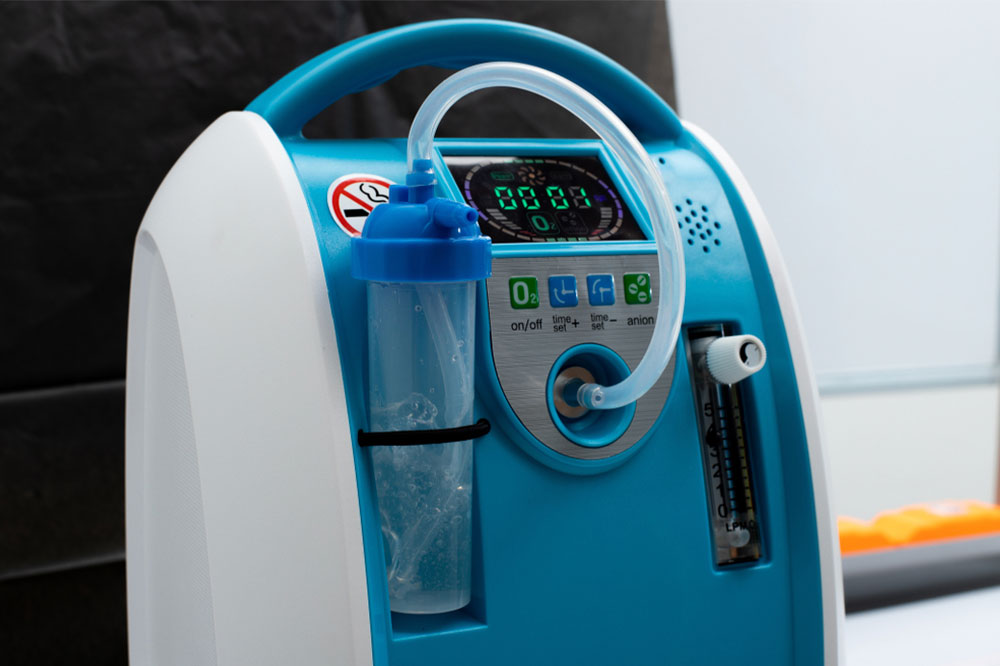All You Need to Know about Portable Oxygen Devices
Portable oxygen is prescribed for people who have difficulty in breathing, and for those who suffer from medical conditions that affect the oxygen levels in their bloodstream. These compact oxygen tanks can be strapped to the back of even young children to help them get enough oxygen to lead normal lives.
These portable breathing equipment come in different varieties, and you can choose them based on the cost, and as per your requirements whether continuous supplemental oxygen therapy is needed throughout the day or only at certain times.

Who needs oxygen therapy?
Oxygen therapy may be required under various circumstances. If you suffer from a lung condition such as chronic obstructive pulmonary disorder (COPD) that has severely affected your ability to naturally breathe in enough oxygen, you will be prescribed supplemental oxygen support. If you suffer from a heart disease that affects your ability to breathe or if you suffer from other conditions such as bronchopulmonary dysplasia, asthma, pneumonia, or sleep apnea.
Symptoms such as shortness of breath, rapid pulse rate, a confused mental state, changes in the color of your skin, and so on might indicate the inadequate level of blood oxygen in your body. Oxygen in your bloodstream needs to be at the correct level for your body to function normally.
To determine your blood oxygen level, your doctor might conduct different tests. These could include arterial blood gas level, spirometry, and an X-Ray or a CT scan. If your blood oxygen level is very low, your doctor would prescribe supplemental oxygen therapy. Depending on the severity of your condition, you will be prescribed the oxygen doses. Based on all these, your doctor may tell you the type of stationary and portable oxygen equipment you will need.
Supplemental oxygen
The air we breathe in has just 21% of oxygen in it, the majority of the atmosphere around us is nitrogen (78%). The rest of the air is composed of other gases. Those with lung disorders might find it difficult to absorb enough oxygen from the air, and supplemental oxygen support will be needed in such cases.
Portable oxygen tanks
Portable oxygen systems are generally in the form of small cylinders that can be strapped to your back. The oxygen is delivered through a nasal cannula that draws oxygen from the portable tank. One end of the nasal cannula is attached to the oxygen tank and the other end is branched out into two short tubes that are placed just inside your nostrils to deliver oxygen.
Portable oxygen types
Portable oxygen equipment comes in different forms:
Oxygen gas tanks
These small tanks are filled with pressurized oxygen. The high pressure allows the oxygen to be delivered to you in the right amount and frequency through the cannula. However, you need to change the tank once the oxygen runs out and change to a fresh tank. You may need to store a lot of tanks in your house to ensure an adequate supply.
Liquid oxygen tanks
These tanks contain oxygen in a liquid form. This is a highly concentrated form of oxygen, so more oxygen can be stored in a smaller tank. The liquid turns into a gas when it passes through the cannula into your nostrils. The pressurized oxygen ensures that there is adequate supply as you need through the day. These tanks can be refilled. However, the liquid gas in the tank is cold enough to cause injuries so you need to be careful while storing and using them.
Oxygen concentrators
Oxygen concentrators come in large size stationary equipment as well as in portable models. The stationary equipment is for home use when the patient might need a continuous supply of oxygen, especially at night. The portable concentrators are compact devices that are easy to carry around. Oxygen concentrators work on electricity. They need to be plugged into a power socket, or they can be battery powered.
Both stationary and portable oxygen concentrators work on the same principle. They take in air from the surroundings. This air is sent into the concentrator system that then delivers air with a high level of oxygen.
The concentrator contains several parts. It has a compressor much like an air conditioning equipment to compress the air the system draws in. This compressed air then passes through a filter bed that contains two filters. The filtered air which now contains 90 to 95% oxygen is delivered to a product tank that has a pressure regulator. This ensures that the oxygen is delivered at the right pressure to provide you the right dosage needed. Portable oxygen concentrators deliver the oxygen through the cannula in a pulse delivery system. Stationary concentrators are capable of delivering oxygen continuously in larger dosages as needed.
Generally, oxygen concentrators are much safer than portable oxygen tanks as they do not need to store the oxygen in large amounts. The oxygen is filtered directly from the surrounding air and is thus less dangerous. For this reason, oxygen concentrators are allowed even inside airplanes.
The type of equipment you choose depends on the cost, the safety considerations, and other factors. While portable oxygen concentrators are safer, you may need an oxygen tank backup in case you forget to charge your battery or something goes wrong with the system. Although it is expensive, many people choose oxygen concentrators due to safety, easy portability, and easy transportability in airlines.


